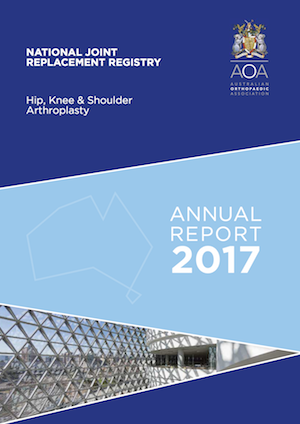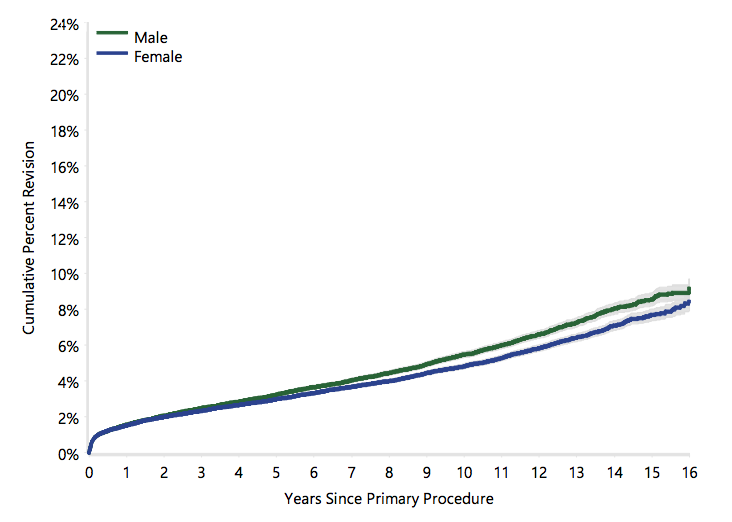How Long do Total Hip Replacements Last
A frequently asked question is how long total hip replacements last. A common misconception is that a total hip replacement has some kind of used by or expiry date, after which is is no longer useful or workable. This is far from the truth. Total hip replacements are one of the most successful operations that we can perform, and using the direct anterior approach has further refined an already successful operation further.
In Australia, that is a fantastic tool called the National Joint Replacement Registry. This would probably collect information on over 99% of all total hip, knee and shoulder replacements that occur in Australia and is the tool that all orthopaedic surgeons would use in highlighting prostheses issues or identifying other trends.
When are are consider total hip replacements, there are many reasons for hip replacements. Some of these carry slightly higher rates of failure, such as total hip replacements inserted after someone has broken their hip, or those inserted for developmental childhood issues of the hip. In general, most hip replacements in Adelaide are performed for osteoarthritis. This means wear and tear of the joint, resulting in pain, stiffness and difficulty mobilising.
Of all total hip replacements, the revision rate (meaning another operation to change something in the hip) is performed in 8% of patients at 15 years. This means that 92% of hip replacements have not required further operative management during that 15 years
The Joint Replacement Registry has been running for 15 years now. The latest data has only been released within the last week. Up until the 31st of December 2016, there were 383,123 total hip replacements reported to the registry over the past 15 years, so there is a LOT of data. From this, 88% are due to osteoarthritis, making it the most common reason for requiring a total hip replacement.
%
Revision rate due to any cause at 15 years
%
Revision if <55yo @ 15years
%
Reason for revision: Dislocation
%
Revision rate if >75yo @ 15years
When we actually look at the data closely, we can see that the rates of revision are actually very good. At 15 years, there is only an 8.1% chance of requiring a revision operation. This means that 92% of patients still have their original hip replacements in place. When we look closer at the data, you can see that age plays a factor. But the data is not quite as dire as it seems for our younger patients.
Younger patients have been known to have higher demands, and lower life spans for their joint prostheses, however when we look at the data, you can see that although this is definitely the case, the rate of revision for patients under the age of 55yo is 9.9% at 15 years. In our older patients, this drops to 6.4% in those over 75yo.
In addition, males have a slightly higher revision rate than females (See image to the left).
What are the reasons for revision?
Revisions occur due to many reasons, however the 2nd most common reason for revision is dislocation. Dislocations are a troublesome risk of total hip replacements. In some cases, patients are warned not to bend over to pick things up, cross their legs, or sit in a low chair. Some of these restrictions are forever.
In the direct anterior approach, these restrictions no longer apply. Due to the fact that all the muscles are spared, and the posterior structures are not violated, patients are permitted to sit, lie, and move as they please immediately after the operation. Whilst, no method of total hip replacement is dislocation free, the risk can be minimised using a muscle sparing approach.
How should we interpret the data?
Like all things, statistics are just numbers. They do not relate to real world examples in all cases, and act as a guide for surgeons to determine issues that may be arising over time, and not to rely purely on anecdotal or personal experiences.
However, the data can also be difficult to interpret – especially when taken without context, or without taking into consideration other variable factors, such as geography, hospital, surgeon training, theatre staff training, sterilisation staff training etc. All members of the team contribute to the results obtained by a particular surgeon
The purpose of this article is to give some insight into the survivability of total hip replacements over time. The numbers within are a guide to making the choice for moving forwards with a total hip replacement, or trying to treat osteoarthritis non operatively.
Thankyou for reading!
Easter Orthopods 2023
Easter Egg-Citement! What better way to celebrate Easter than with a competition for our nurses! Join us for a fun filled egg-citing journey to claim your prize!How to Play: If you are a nurse or staff member who works in the St Andrews theatre...
Christmas Hours
Christmas Hours Monday 21 Dec 20 - Open as usual Tuesday 22 Dec 20 - Open as usual 23 Dec 20 until 10 Jan 21 - CLOSED Please contact us via email during the break so we can get back to you once the office reopens. Merry Christmas and a happy new year! Thankyou...
Business Profile Chameleon Art Rental
Recently we held a competition on our Facebook page. Some of the fantastic businesses that were highlighted are people that we have had the pleasure of meeting, or even treating over the past few years. In this case, our competition was viewed on our Instagram! Our...
Orthopaedics 360
Orthopaedics 360
P: (08) 7099 0188
F: (08) 7099 0171
Southern Specialist Centre
Orthopaedics 360
P: (08) 7099 0188
F: (08) 7099 0171
Health @ Hindmarsh
Orthopaedics 360
P: (08) 7099 0188
F: (08) 7099 0171



